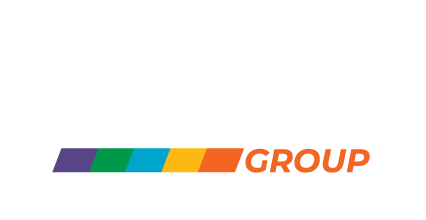Creating safe school zones is not just a matter of good policy. It is a public responsibility.
School zones are one of the most sensitive and high-risk environments on Australian roads. They demand clear, visible, and functional infrastructure to keep students, parents, teachers, and road users safe every day.
At HIVIS, we have spent decades working with councils, contractors, and safety officers to help them maintain and improve these zones with signage and systems built for real-world conditions. But in speaking with many of our clients, one thing becomes clear: even the best setups can drift out of compliance over time.
Weather, construction, vegetation, product wear, or even something as simple as a faulty LED can compromise school zone safety. That is why we have created a practical compliance checklist to help you evaluate your current school zones quickly and clearly.

Why Mid-Year Is the Ideal Time to Audit
The halfway point in the school year is an ideal time to review school zones. After months of exposure to sun, rain, traffic and wear, even durable materials can start to fade or malfunction. Councils also often use the school holiday window in June or July to perform upgrades with minimal disruption.
This checklist is designed to help you identify:
- Compliance gaps
- Safety risks
- Opportunities for product replacement or upgrades
It also highlights where HIVIS products can directly solve these problems, helping you act with confidence and stay ahead of issues before they become incidents.

Your School Zone Compliance Checklist
Ask yourself the following:
1. Are school zone signs clean, legible, and compliant with current state regulations?
Signs should meet current state requirements for height, placement, size, and reflectivity. Look for fading, leaning, graffiti, or outdated formats.
2. Are all LED flashing signs working correctly during designated school hours?These signs are critical. Malfunctioning LEDs or timers reduce driver awareness and increase risk.
3. Do you have a fault-monitoring system in place for LED components?
As Matt Allan, Product Development Lead at HIVIS, noted:
"The main one I would say is faulty LED components. Part of our new school zone platform is to monitor these faults and warnings for fast replacement."
With monitoring, councils can act fast and avoid long-term downtime or complaints.

4. Are pavement markings clear, reflective, and visible in poor conditions?
Zebra crossings, speed markings, and hold lines often fade or wash away over time. Freshen up paint as needed.
5. Are safety bollards, crossing aids, and barriers intact and correctly installed?
These passive tools physically guide traffic and footpaths. Broken or poorly placed ones can confuse drivers and put students at risk.
6. Do signs meet reflectivity standards (Class 1100 or Class 400)?
Lower-grade materials deteriorate faster. Higher classes ensure visibility in all light conditions, including dawn and dusk.
7. Is visibility clear from all driver approaches?
Check for obstructions like parked cars, tree branches, poles, or bins that block a driver’s view of the zone.

8. Are temporary signs available for events, maintenance, or detours?
Events like carnivals, nearby roadworks, or utility upgrades require flexible signage to maintain safe traffic flows.
9. Do you have asset tracking for signs and safety equipment?
Digitally managing signage types, locations, install dates and inspections can streamline safety programs and help with budgeting.
10. Are your council or contractor vehicles using reflective graphics near schools?
Fleet vehicles operating in or near school zones should be clearly marked with reflective HIVIS decals to increase visibility during movement and parking.

Common Problems You Might Miss
Even experienced facility and fleet managers can miss these common issues:
- LED signs with no auto-check capability (you might not know they have failed)
- Cracked, leaning posts after mower or vehicle impact
- Tree branches growing across signs post-installation
- Pavement paint eroded by wet weather
- School holiday banners covering warning signs
- Confusing dual signage where multiple school zones overlap
These are the types of issues that do not get caught unless you are looking for them or unless someone complains. That is why checklists like this are so valuable.
How HIVIS Can Help?
We design and manufacture products that solve issue mentioned above. Our offering includes:
LED 40 School Zone Signs Smart Signs |
Steel Crash Protection Bollards |
Speed Humps |
Class 400 & 1100 Vinyl High-Grade Road Signage |
All our signage and safety products meet or exceed Australian Standards. More importantly, they are backed by teams who understand field conditions and real-world constraints.
Final Word: It’s About Protection, Not Just Compliance
True compliance is not just about checking boxes. It is about making school zones safe, visible, and trusted environments for the people who rely on them every day. With the right signage, systems, and monitoring in place, you can protect both your community and your council’s reputation.

Need help reviewing your zones or replacing outdated signage?
HIVIS offers free consults and product bundles tailored for schools, councils, and contractors.
Get in touch today to discuss your school zone audit, signage upgrade, or LED fault detection setup.








